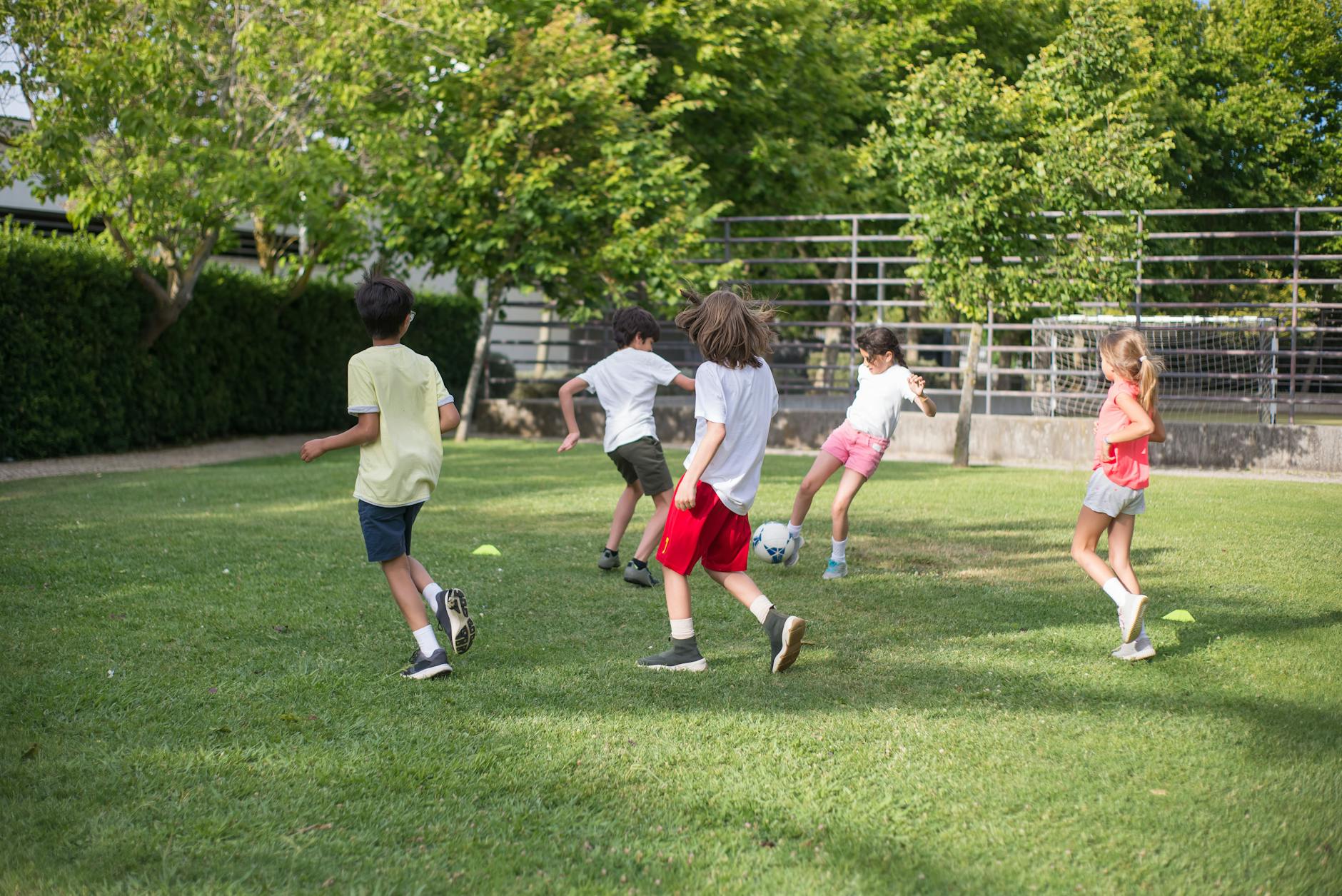Connecting Kids with Nature
When it comes to nurturing a love for the great outdoors, introducing children to outdoor activities is essential. Engaging in nature-based experiences not only offers countless opportunities for fun and adventure but also provides numerous benefits for children’s physical, mental, and emotional development.
Importance of Outdoor Activities for Children
In today’s digital age, children are spending more time indoors, glued to screens, and disconnected from the natural world. It is crucial to encourage outdoor activities to counterbalance this sedentary lifestyle. By exposing children to the wonders of nature, we can help them develop a deeper appreciation for the environment and foster a sense of responsibility towards its conservation.
Outdoor activities provide children with the chance to explore, discover, and engage with their surroundings. Whether it’s climbing trees, building forts, or jumping in puddles, these experiences help children develop essential motor skills, coordination, and balance. They also encourage creativity, problem-solving, and imaginative play, allowing children to develop their cognitive abilities in a natural and stimulating environment.
Benefits of Exploring the Outdoors
Engaging in outdoor activities offers a multitude of benefits for children’s overall well-being. Here are a few key advantages:
| Benefits of Exploring the Outdoors |
|---|
| Physical Health: Outdoor activities promote physical fitness, helping children develop strength, endurance, and cardiovascular health. They also provide an opportunity for children to engage in active play, improving their motor skills and coordination. |
| Mental and Emotional Well-being: Spending time in nature has a positive impact on children’s mental health. It reduces stress, anxiety, and symptoms of attention-deficit disorders. Outdoor activities offer a refreshing break from daily routines and allow children to experience a sense of freedom and connection with the natural world. |
| Social Skills and Relationship Building: Outdoor activities provide opportunities for children to interact and collaborate with others. They learn to communicate, negotiate, and cooperate, fostering the development of social skills and meaningful relationships. |
| Environmental Awareness: By immersing themselves in nature, children gain a deeper understanding of the environment and the importance of conservation. This awareness can lead to a lifelong commitment to protecting our planet. |
By encouraging children to spend time outdoors and participate in outdoor activities, we pave the way for their holistic development. From physical health to cognitive growth and emotional well-being, the benefits of exploring the outdoors are immeasurable. So, let’s inspire the next generation to connect with nature and create lasting memories through outdoor adventures.
Fun Outdoor Activities for Kids
Engaging children in outdoor activities not only provides them with a chance to enjoy the natural environment but also offers numerous benefits for their physical and mental development. Here are three exciting outdoor activities that kids can enjoy:
Nature Scavenger Hunt
A nature scavenger hunt is a thrilling and educational activity that encourages children to explore their surroundings while having fun. Create a list of items for them to find, such as leaves, rocks, flowers, or specific types of plants or animals. You can also include clues or riddles to make it more challenging.
To enhance the experience, consider incorporating technology by using a smartphone or tablet to take pictures of the discovered items. This allows children to document their findings and learn more about them later. Encourage them to learn about the plants and animals they encounter during the scavenger hunt by providing resources or guiding them to relevant websites or books.
Nature Art and Crafts
Encouraging children to express their creativity using materials found in nature can be a delightful and eco-friendly activity. Collect leaves, twigs, flowers, and rocks during a nature walk, and then use them to create unique artwork or crafts.
Here are a few ideas:
- Leaf rubbings: Place a leaf under a piece of paper and use crayons or colored pencils to rub over the leaf, revealing its intricate details.
- Nature collages: Glue leaves, flowers, and other natural materials onto a piece of cardboard or paper to create beautiful collages.
- Rock painting: Use acrylic paints or markers to decorate rocks with vibrant colors and patterns. These painted rocks can be used to decorate gardens or as paperweights.
Encourage children to let their imagination run wild and create their own masterpieces inspired by nature. This activity not only fosters creativity but also deepens their connection with the natural world.
Gardening and Planting
Introducing children to gardening is a wonderful way to teach them about nature, responsibility, and the importance of sustainable practices. Start by allocating a small area in your yard or using planters or pots if space is limited. Let children choose the plants they want to grow, such as flowers or vegetables, and involve them in the entire process, from planting the seeds to watering and caring for the plants.
This hands-on experience allows children to witness the growth and development of plants firsthand, teaching them about the lifecycle of plants and the importance of nurturing them. Additionally, gardening helps children develop patience, responsibility, and an appreciation for the environment.
| Plant | Time to Harvest |
|---|---|
| Carrots | 60-80 days |
| Tomatoes | 60-80 days |
| Sunflowers | 70-100 days |
| Radishes | 20-30 days |
Encourage children to maintain a gardening journal, documenting their progress and observations. This activity also provides an opportunity for children to learn about healthy eating and the importance of growing their own food.
By engaging in nature scavenger hunts, nature art and crafts, and gardening, children can develop a love for the outdoors while learning valuable lessons about the environment and their place in it. These activities foster creativity, curiosity, and a sense of responsibility towards nature.
Adventure in the Wild
Engaging in outdoor activities not only fosters a deeper connection with nature but also provides endless opportunities for kids to learn, explore, and have fun. Let’s dive into some exciting adventures in the wild that children can embark on.
Camping and Hiking
Camping and hiking are fantastic outdoor activities that allow kids to immerse themselves in nature and experience its wonders firsthand. Camping trips provide opportunities to learn essential skills such as setting up tents, building a campfire, and cooking outdoors. Exploring hiking trails allows children to observe different plants, animals, and geological formations.
When planning a camping trip or hike, it’s important to choose a suitable location and prepare accordingly. Ensure you have the necessary camping gear, such as a diy water bottle holder or a hiking water bottle carrier, to keep everyone hydrated throughout the journey. Don’t forget to pack essential items like a map, compass, first aid kit, and enough food and water.
Bird Watching and Animal Tracking
Bird watching and animal tracking are excellent activities for kids to develop an appreciation for wildlife. Encourage them to observe and identify different bird species, noting their behaviors and habitats. Animal tracking involves looking for signs of animals, such as footprints, droppings, or chewed vegetation, and learning about their habits and movements.
To enhance the bird watching experience, consider providing children with binoculars and a field guide to help them identify various birds. You can also create a bird watching journal where they can document their sightings and observations. Similarly, animal tracking can be made more exciting by using a tracking guidebook or joining guided nature walks led by experts.
Stargazing and Astronomy
Stargazing and astronomy offer a captivating way for kids to explore the wonders of the night sky. Take them to a location away from light pollution, such as a park or open field, where they can enjoy unobstructed views of the stars. Teach them to identify constellations, planets, and other celestial objects using star maps or mobile apps.
Consider setting up a telescope to observe planets, the moon, or even distant galaxies. Engage children in conversations about the vastness of the universe and the mysteries it holds. Encourage their curiosity by answering their questions or exploring together topics like space exploration, the solar system, or the life cycle of stars.
Engaging in these outdoor adventures not only provides children with memorable experiences but also instills in them a love for nature and a desire to protect the environment. Remember to prioritize safety by adhering to outdoor safety guidelines, packing appropriate gear, and being prepared for unexpected situations. So, grab your gear, embark on an adventure, and let the wild inspire and educate young minds.
Safety First
When engaging in outdoor activities with kids, prioritizing their safety is of utmost importance. Here are some essential safety measures to consider for a worry-free outdoor adventure.
Sun Protection and Hydration
Spending time outdoors exposes children to the sun’s rays, making sun protection a crucial aspect of outdoor activities. Encourage kids to wear sunscreen with a high SPF rating and apply it generously on all exposed areas of their skin. It’s important to reapply sunscreen every two hours or more frequently if they have been swimming or sweating.
To avoid the risk of dehydration, ensure that children drink an adequate amount of water throughout their outdoor adventures. Encourage them to carry a water bottle to stay hydrated. DIY water bottle holders, such as those made from fabric or paracord, can be a practical solution. Explore our article on diy water bottle holder for creative ideas and instructions. It’s also helpful to schedule regular water breaks, especially during hot weather or intense physical activities.
Insect Protection
When exploring nature, insects can be a common encounter. To protect children from bug bites and potential insect-borne diseases, take preventive measures. Apply insect repellent to exposed skin, following the instructions on the product label. Additionally, dressing children in light-colored, long-sleeved clothing and long pants can provide an extra layer of defense against insects.
It’s worth noting that some insects, like ticks, are more prevalent in certain areas or seasons. Educate yourself about the local risks and take appropriate precautions, such as checking for ticks after outdoor activities and removing them promptly to reduce the chances of tick-borne illnesses.
Emergency Preparedness
While outdoor activities can be enjoyable, it’s important to be prepared for unexpected situations. Teach children basic emergency preparedness, including how to identify landmarks, follow trail markers, and stay calm if they become lost. Encourage them to carry a whistle or other signaling devices to attract attention if needed.
Having a first aid kit readily available is essential for addressing minor injuries. The kit should include items like band-aids, antiseptic wipes, and adhesive tape. Familiarize yourself with basic first aid procedures and keep a reference guide handy for quick assistance.
In case of more severe emergencies, it’s essential to have a plan. Make sure children know how to contact emergency services and teach them their full name, address, and phone number. It’s also a good idea to inform a responsible adult about your planned outdoor activities and estimated return time.
By prioritizing sun protection, hydration, insect protection, and emergency preparedness, you can ensure the safety of children during outdoor activities. Remember, safety measures are key to creating enjoyable and worry-free adventures in nature.
Recent Posts
Bottle Carrier Crafting Crafting your own bottle carrier brings a sense of creativity and practicality to your outdoor adventures. Whether you're going hiking, biking, or simply enjoying a day at...
Never Lose Your Water Bottle Again: Must-Try Holder Patterns Revealed
Crafting Your Own Water Bottle Holder Crafting your own water bottle holder is a practical and fun DIY project that can enhance your outdoor activities. Whether you enjoy hiking, camping, or simply...

